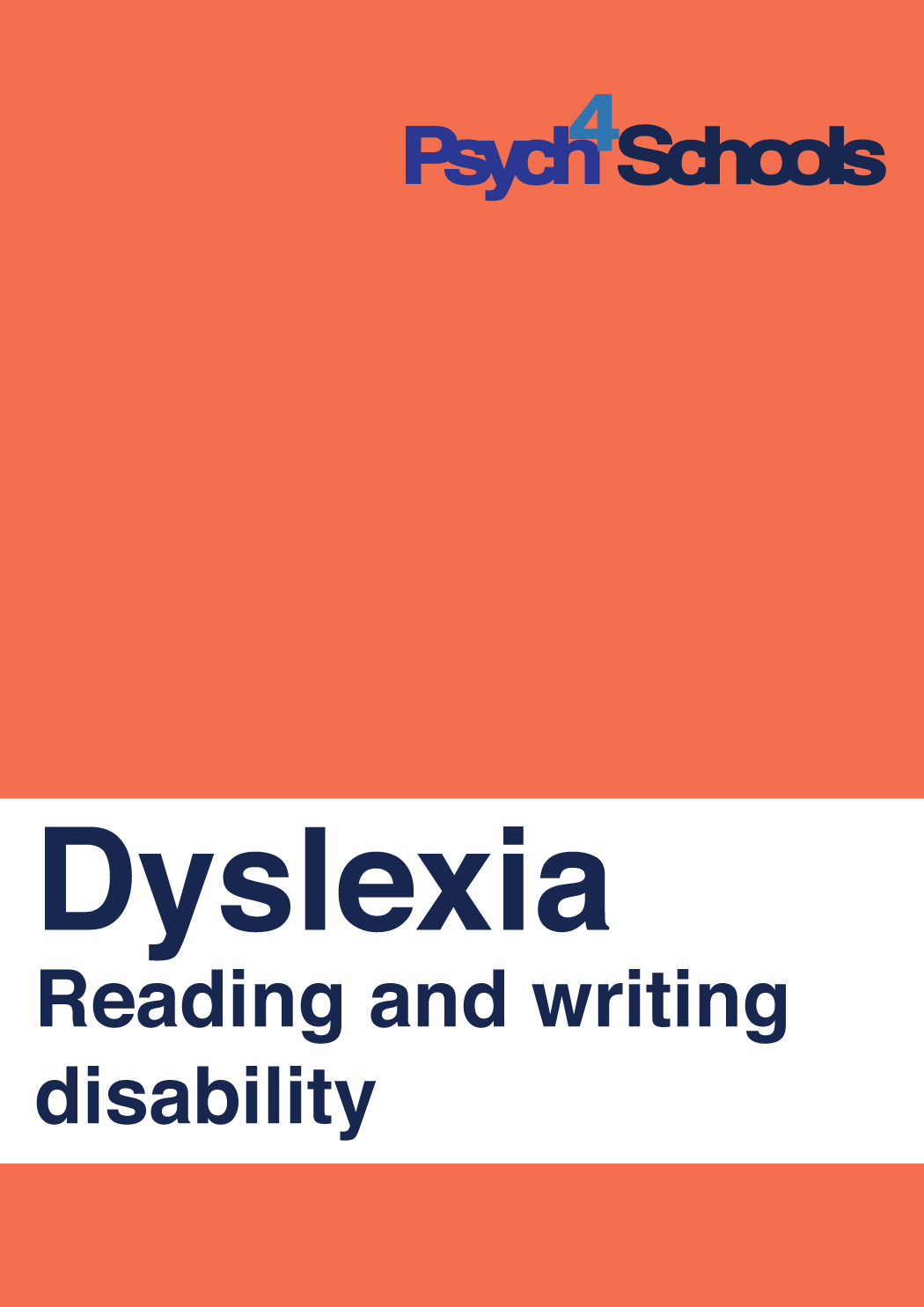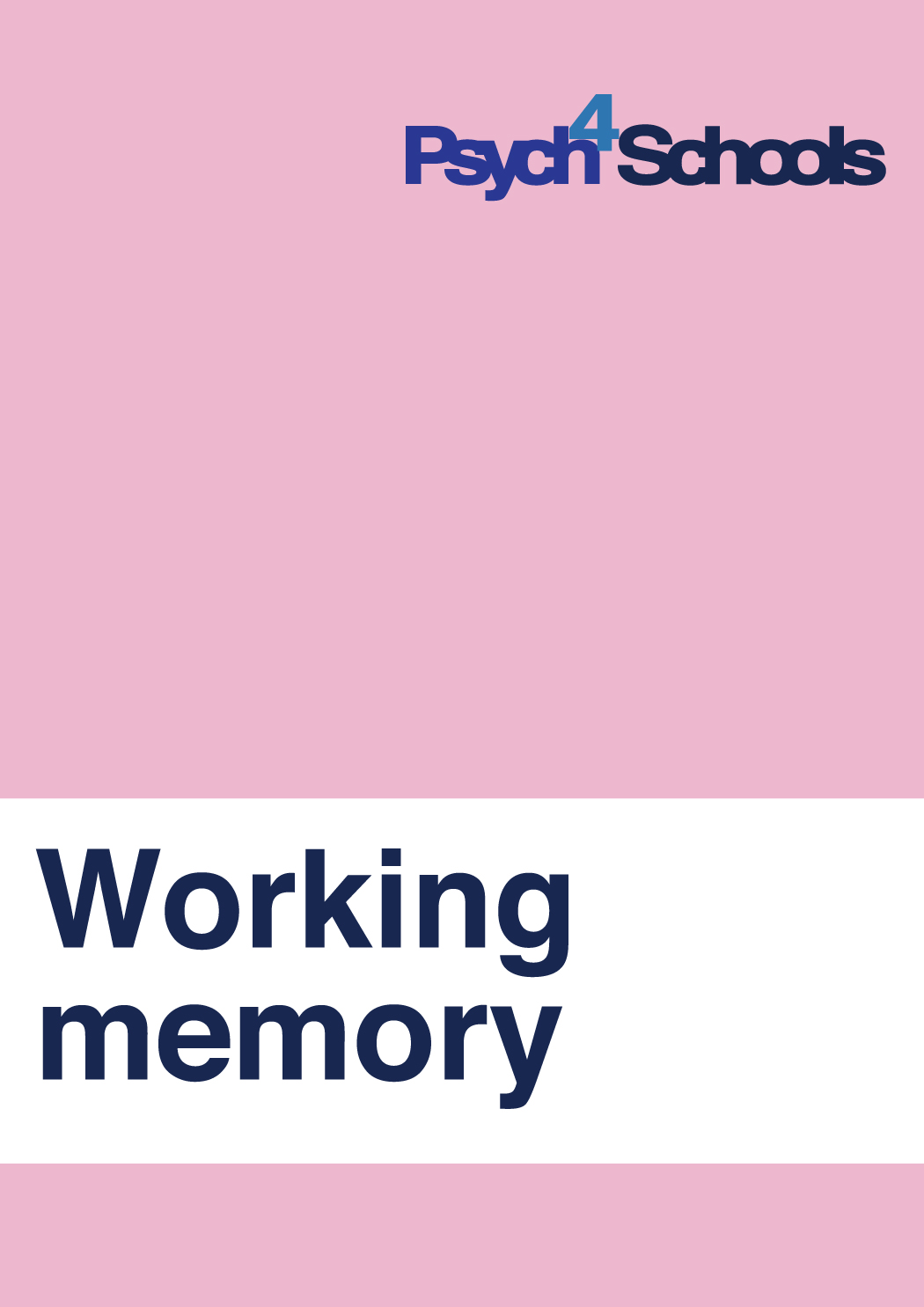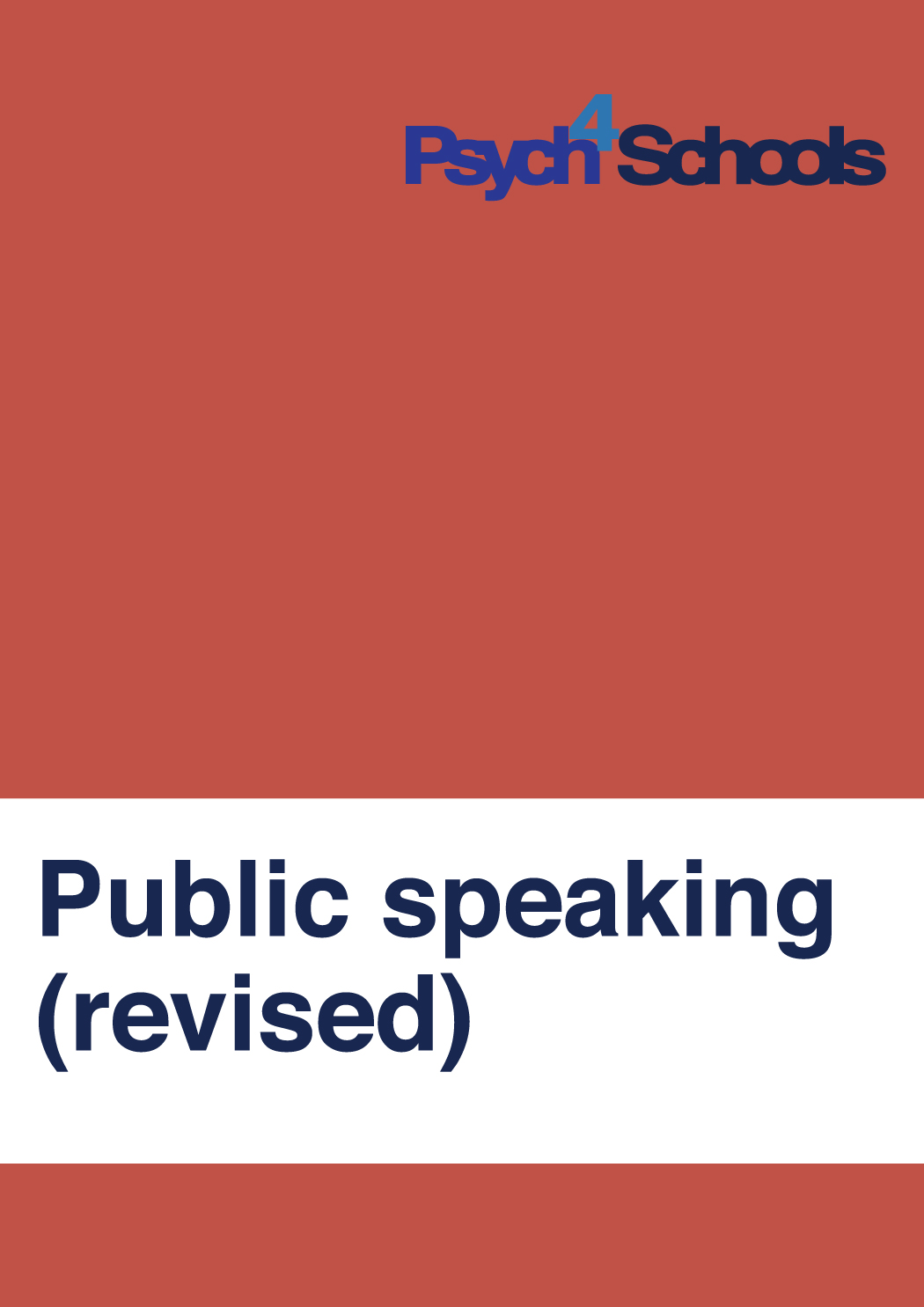Dyslexia
The following is an excerpt from the ebooklet Working with children with dyslexia by Murray Evely and Zoe Ganim.
Introduction
The word dyslexia means ‘poor with words’.
The International Dyslexia Associationdefines dyslexia as being characterised by difficulties with accurate and fluent word recognition and poor spelling and decoding abilities. These difficulties typically result from a deficit in the phonological component of language. Secondary consequences include reduced reading experience, which can impede growth of vocabulary and general knowledge, leading to problems in reading comprehension.[2] The International Dyslexia Association. 2002. ‘What is dyslexia?’ http://www.interdys.org/FAQWhatIs.htm
Children with dyslexia typically have difficulties with the following:
- Working memory.[3]Gathercole, S. E. and Alloway, T. P., ‘Practitioner Review: Short-term and working memory impairments in neurodevelopmental disorders: diagnosis … Continue reading Insufficient short-term ‘mental workspace’ can make the linguistic storage and processing needed for reading, writing and spelling difficult.
- Phonological processing.[4]http://brain.oxfordjournals.org/cgi/content/full/126/4/841 Frank Ramus, Dyslexia is a neurological disorder of genetic origin, Fig 4. Distribution of … Continue reading Problems associated with connecting written letters to their corresponding sounds (phonemes) are reflected in an inability to rapidly name letters and their common associated sounds.[5]Developmental Dyslexia. SPELD (S.A.) Inc. September 1993 Newsletter, by permission. Hence, children struggle to decode letters and words when reading, and to encode letters and words for spelling and writing.
Further difficulties include the following:
- Auditory processing. This often involves not hearing or expressing subtle differences between speech sounds such as a and u, i and e, sh and ch or t and d.
- Visual processing. This may impact on visual tracking across a word or line of print. For example, the child looks at the word like and reads it as milk, having ‘recognised’ the letter combination lik but not followed the left to right sequence used when reading.
- Upper body and fine motor skills. Difficulty may be experienced in making the smooth automatic movements required to write lowercase letters and symbols. This may lead to piecemeal, bottom-to-top movements or slow, incorrect letter formation. This is tiring and interrupts the processing, learning and sequencing of individual letters and words.
The above difficulties can lead to problems with the following:
- Using rhyming words and learning nursery rhymes.
- Learning letter names and their common associated sounds with rapid recall.
- Sounding out phonologically regular words, blending sounds and using syllables.
- Following print conventions, such as reading and writing from left to right.
- Reading individual words. The contextual support provided by syntactic and semantic cues, along with pictures and background knowledge of the topic or story can make reading words within a sentence slightly easier for some children.
- Keeping place and reading fluently. Since these children often stumble on words, reading aloud a long passage of text to a teacher or group should not be expected.
- Comprehending when reading silently or aloud. However, comprehension can be often achieved if the text is read aloud to the child.
- Spelling. Some children will find reading less challenging than spelling, as reading can sometimes be achieved by ‘sampling’ information on the page supported by other contextual information. Spelling is more precise, since it requires letters to be written in the correct sequence.
- Working memory. Compared with peers, children with dyslexia generally find it more time-consuming and mentally draining to process and store sequential information. This can severely impact on learning.
- Remembering what to do. Short-term verbal memory difficulties are linked with poor working memory. This can result in difficulty recalling and following a sequence of sounds, spoken instructions, copying and writing lists of words or sentences, and poor mental arithmetic. This is similar to the impact of poor working memory.
- Organisational skills. Forgetting what to do often leads to poor personal organisation. It can also be manifested in the child having a poor sense of time.
- Mathematics. Some children will have no issues with mathematical concepts unless literacy is involved. A small percentage will actually excel. Others will require remediation in some areas, often due to short-term memory problems and/or difficulties with written English.[6]Tony Attwood, Dyscalculia and Dyslexia www.dyscalculia.me.uk/Dyscalculia%20and%20Dyslexia.pdf Directionality, memorisation and sequencing difficulties [7]Baumel, J., Learning Disabilities in Children: An Overview. n.d. … Continue reading can make some mathematics tasks very difficult. See the Psych4Schools ebooklet Working with children with a mathematics disability (dyscalculia) when it becomes available on the website.
For some children with dyslexia, the daily challenges of school may result in co-existing issues related to the following:
- Controlling anger or frustration. Children can experience a loss of confidence, poor self-esteem, tiredness and frustration at their inability to learn to read and spell.
- Anxiety and worry about accessing the wider curriculum and ‘keeping up’ with others.
Addressing the child’s learning needs and wellbeing are main priorities, in addition to building compensatory skills, resilience and coping.
When are children typically diagnosed with dyslexia?
Current definitions of dyslexia [8] American Psychiatric Association, Diagnostic and Statistical Manual of Mental Disorders, Fourth Edition, Text Revision, DSM – IV _TR, Washington, … Continue reading can make it difficult to formally diagnose very young children, as diagnosis is based on reading, writing and spelling abilities that are substantially below average and unexpected, given the child’s chronological age, measured intelligence, and age-appropriate education. Hence, formal diagnosis is often delayed until mid–Year 2 or much later as there is a lack of guidance in regard to what constitutes ‘substantially below average.’ Some psychologists think this means two years or more below average, whereas others believe four or more years below constitutes this criterion.
A late diagnosis can also occur because children with dyslexia tend to use whole word recognition strategies rather than decoding skills when reading. Thus, a young child’s ability to read words by sight can mask their inability to decode words. By around Year 4, they can no longer store the growing number of words required for age appropriate reading in their head,[9] and problems with reading and writing become apparent for the first time.
Screening students prior to school entry or during the first year of school[10] to examine phonological processing (decoding skills) and short-term auditory memory skills (a component of working memory) can help to identify students ‘at risk’ of dyslexia. This enables early implementation of strategies to assist and support the child.
How is dyslexia diagnosed?
Children with dyslexia may initially be identified by a child’s teacher or parent through observation, a poor result on the school’s screening test, slow progress in learning letters and their associated sounds, or poor performance when reading or on various tests.
An educational or school psychologist or a team of professionals (with expertise in psychology, linguistics, speech pathology, special education, reading, language and literacy) are typically involved in a diagnosis of dyslexia.
Diagnosis is often made following a series of reading, writing and language assessments and an intelligence test. IQ tests such as the WISC-IV [11] are recommended for children age six years, as they show particular profiles for dyslexic readers and their administration can assist in ruling out or identifying other disabilities or co-existing conditions.
Psychologists experienced in diagnosing dyslexia would traditionally diagnose a child with dyslexia as having a reading disorder and/or a writing disorder.[12]
Why is accurate diagnosis of dyslexia important?
Accurate diagnosis of dyslexia can help teachers and specialists to plan and implement appropriate interventions, programs and expectations for progress. In addition, older children may experience huge relief following diagnosis as they now know they are not ‘stupid’ or ‘dumb’ and can understand why they experience difficulties with letters and words and have frustratingly slow academic achievement.
Early detection and screening tools for teachers
Screening every child prior to school entry or during the first year of school can identify children with dyslexia. Targeted, appropriate and early intervention is likely to reduce the incidence of this condition becoming a debilitating lifelong learning disorder.
Psych4Schools members can refer to Dyslexia screening tools for preschool, and for the first year of schooling.
Without an early screening program, children with dyslexia may not be identified until their mid– to late–primary years or sometimes not at all. As a result, some children experience many years of frustration, worry and anxiety trying to learn to read and write and accessing the wider curriculum.
Standardised tests
There are a number of phonological awareness tests that Speech Pathologists administer. Specially trained teachers and special education teachers can administer the following:
- Sutherland Phonological Awareness Test [13] for students in their first four years of schooling. Requires about 20 minutes to administer.
- The Phonological Assessment Battery [14] for students from age 6 to 14 years of age. Requires about 30 to 45 minutes to administer.
Older children with dyslexia
Intervention can aim to assist older children to learn compensatory skills, as they may never entirely overcome the disorder. Nola Firth and Erica Frydenberg’s book, Success and Dyslexia, offers suggestions to help upper primary students build resilience and coping skills.
Caution
Un-remediated dyslexia is a lifelong condition that can lead to severe difficulties in the pursuit of secondary and higher education. Untreated dyslexia may also lead to social isolation, social and emotional issues, on-going difficulties with schooling, antisocial behaviour, adolescent delinquency, school dropout, homelessness, prison and higher rates of suicide.[15]
Under the Australian Disability Discrimination Act, children diagnosed with a specific learning disability such as dyslexia may be eligible, now or in the future, for special accommodations and provisions throughout schooling and further education.
Is dyslexia related to a child’s intelligence?
Many children with dyslexia are of average or above–average intelligence. IQ tests such as the WISC-IV [16] often show particular profiles for dyslexic readers, with a working memory score that is often significantly lower than most other scores, and in some cases a processing speed score that is also significantly lower than verbal comprehension and/or perceptual reasoning scores.
Dyslexia is not primarily the result of visual, hearing or motor difficulties, intellectual disability, emotional disturbance, environmental and cultural factors.
Efforts should be made to assist children of all intellectual abilities and all ages to learn to read and write. Many successful and intelligent adults have been diagnosed with dyslexia. Leonardo Di Vinci, Thomas Edison, Richard Branson and Whoopi Goldberg apparently all had dyslexia but with other natural attributes related to creativity and intelligence achieved remarkable success.
Neurological and genetic predispositions
Young dyslexic readers have phonological processing difficulties that current research suggests arise from inefficiencies in language-processing areas in the left hemisphere of the brain. These children typically rely more on visual patterns and shapes to identify words and have great difficulty ‘unlocking’ sound patterns used by fluent, automatic readers. Research indicates a genetic predisposition to dyslexia, meaning that dyslexia can run in families.
Intervention in other countries
A number of countries, including USA and the UK, have legislated to help ensure reading is taught by systematic, structured and explicit instruction that includes phonics and multisensory techniques.[17] While not legislated in Australia, some experts recommend that all children should be taught using these techniques, as they believe this is the only way to ensure that all children with dyslexia will learn to read.[18]
Strategies to support the child with dyslexia
A number of strategies can be used to support the child with dyslexia.
- Have the child formally assessed by a psychologist who specialises in learning disabilities. Where available, assessments can also be undertaken by a speech pathologist into phonological awareness and other language skills.
- Follow recommendations made by the doctor, psychologist, speech pathologist or accredited dyslexia or educational specialist. Psychological, speech and special education reports typically contain recommendations to assist teachers and parents to support the child. It can be helpful to discuss these with the professional, and to ask questions if you do not understand or agree with suggestions. Specific recommendations can be a useful resource for teachers developing an individual learning plan.
- Seek speech pathology sessions with a focus on improving phonological processing, literacy skills, and other skills as determined by the speech pathologist.
-
- Weekly or block sessions may be provided by the education department or governing authority, or the school, or may be privately funded by the child’s parents.
- Alternatively sessions with a speech pathologist may be obtained in Australia using the Chronic Disease Management–GP Management Plan. Psychologists can recommend that the child’s parents liaise with their GP to see if they are eligible for an allied health team care arrangements. The GP can determine whether speech pathology sessions might improve phonological awareness skills, assisting with reading and spelling.
- Improve handwriting legibility and fluency, pencil control and handwriting legibility to assist with writing, spelling and reading.
- Seek occupational therapy sessions with a focus on improving upper body coordination, fine motor skill, pencil control and handwriting legibility, assisting with writing and spelling, as determined by the occupational therapist. Again these sessions may be potentially be funded by a Chronic Disease Management–GP Management Plan. Psychologists can recommend that the child’s parents liaise with their GP to see if they are eligible for an allied health team care arrangements. The GP may determine that occupational therapy sessions might improve the child’s motor skills.
- Systematically assist the child to learn to recognise and handwrite lowercase letters, hold the pencil using the precision grip, correctly form and shape lowercase letters and use the non-writing hand for paper management and upper body control. Refer to handwriting guidelines for your state or territory.
- Use a handwriting app for your state or territory such as rED Writing.
- Ensure the child can write the alphabet using lowercase letters.
- Where a child has several learning issues or conditions, for example dyslexia, speech articulation difficulties, or a mild expressive language disorder, a psychologist may recommend consideration by a paediatrician of a parent’s eligibility for a Commonwealth Government Carers Allowance via Centrelink. The parents will need to liaise with the child’s GP initially. This tax free, non-means tested allowance would need to be discussed with a paediatrician, who would evaluate the many hours of additional parenting and professional support that will be ongoing for the child.
- Where there is little additional targeted support at school, referral of the child by the parents to a local tutor with expertise in reading difficulties, or a local agency or a learning difficulties consultant at Learning Difficulties Australia (LDA) may be helpful.
ISBN978-1-921908-30-9
Copyright © Murray Evely and Zoe Ganim 2013
No part of this excerpt may be reproduced or reprinted without permission in writing from the publisher.
Click here to read copyright details, summary of the licence and terms and conditions to use and reproduce our digital materials granted to authorised users.
References
This article is an excerpt from the ebooklet Dyslexia.
Download the complete ebooklet for full access to strategies and resources, including:
- Provide support and make accommodations
- Use multi-sensory approaches across the curriculum
- Literacy intervention
- Reading all ages
- Young readers
- Readers in Years 3 to 8
- Writing
- Spelling
- When practising spelling words or lists
- Build working memory
- Help children believe in their own capabilities
- Reduce the load on the child’s working memory
- Use meaningful and purposeful learning activities
- Build personal organisation
- Build support overlearning at ‘personal best’
- Play games, sports drills and have fun
- Tests
- Homework
- Resources





